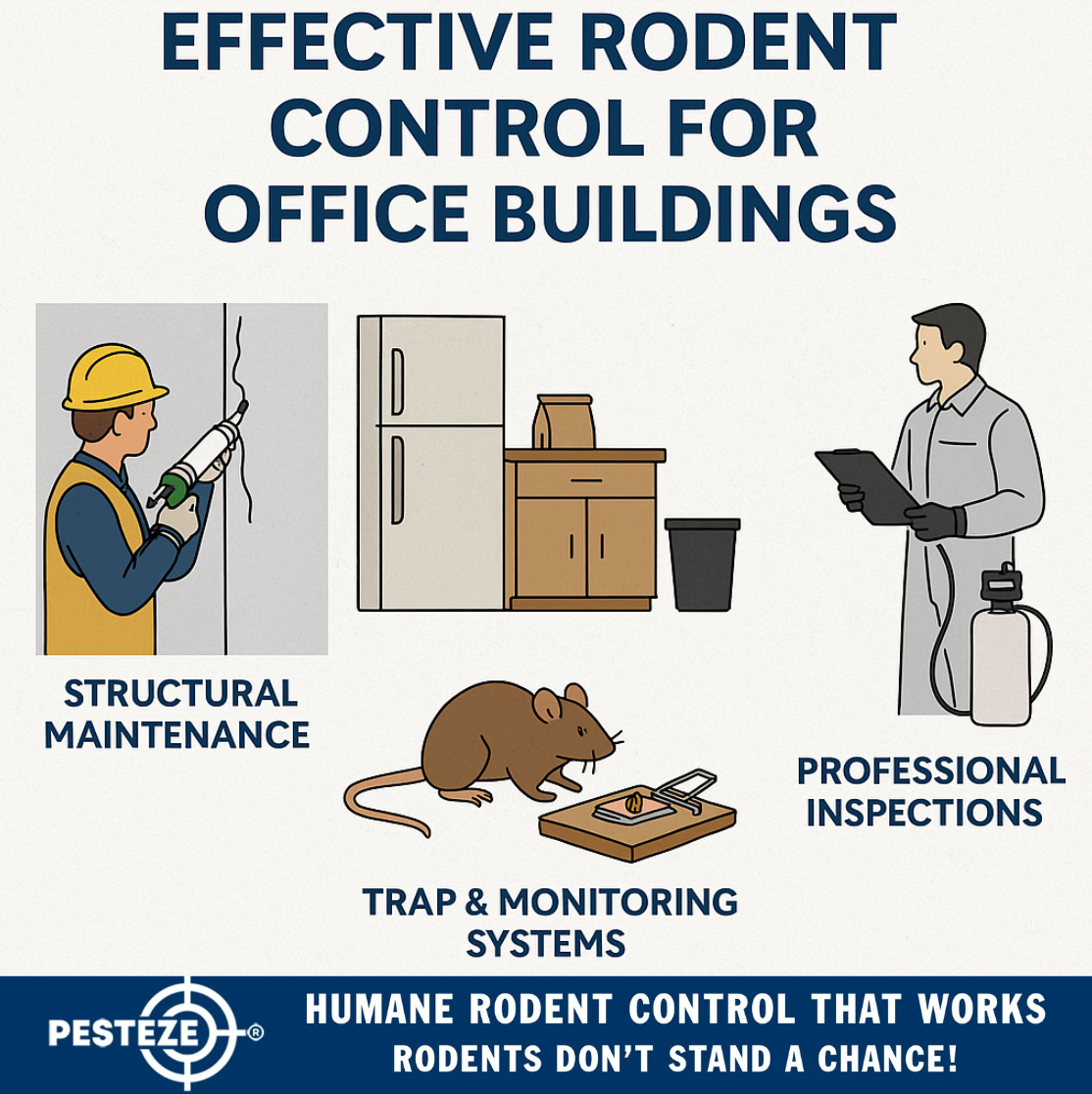EFFECTIVE RODENT CONTROL FOR OFFICE BUILDINGS

EFFECTIVE RODENT CONTROL FOR OFFICE BUILDINGS
SUMMARY
Rodents in office buildings can disrupt productivity, damage property, and pose serious health risks. Maintaining a clean and secure workspace requires consistent prevention, monitoring, and professional pest control strategies to ensure a healthy environment for employees and visitors.
FEATURES
-
Structural Maintenance: Seal wall cracks, vents, and foundation gaps to block entry.
-
Food Storage & Waste Control: Keep kitchens and break rooms clean and trash sealed.
-
Desk & Workspace Cleanliness: Encourage staff to store food properly and declutter desks.
-
Trap & Monitoring Systems: Use traps and motion sensors to detect early activity.
-
HVAC & Utility Checks: Inspect ducts, wiring, and ceiling spaces for rodent access points.
-
Professional Inspections: Schedule regular pest management visits for ongoing protection.
DESCRIPTION
Rodent infestations in office buildings can create serious operational and health concerns. Rats and mice often seek shelter in warm, quiet spaces such as ceiling voids, basements, and storage areas, where they can chew on cables, contaminate surfaces, and spread disease. Because offices have consistent human activity and food sources, effective rodent management depends on prevention, cleanliness, and professional support.
The first step is sealing structural entry points. Rodents can slip through tiny gaps near doors, plumbing lines, vents, and electrical conduits. Regular maintenance checks and sealing cracks with metal mesh, caulk, or cement prevent easy access to interior areas.
Food and waste management play a critical role in deterrence. Employees should be encouraged to keep snacks and meals stored in sealed containers and to clean up crumbs or spills promptly. Break rooms, cafeterias, and waste bins must be sanitized frequently to eliminate attractants.
Maintaining a clutter-free workspace helps too. Rodents often build nests in piles of paper, cardboard boxes, or unused storage. Reducing clutter not only improves hygiene but also eliminates potential hiding spots.
Installing monitoring systems and traps is essential for detecting early signs of activity. Place traps discreetly near walls, in storage areas, and under sinks where rodents tend to travel.
HVAC systems and utility areas are common rodent entry zones. Regular inspections of ducts, ceiling panels, and cable pathways help identify vulnerabilities before they escalate.
Finally, partnering with a professional pest control service ensures thorough and consistent management. Experts can conduct inspections, deploy safe baiting systems, and implement exclusion measures customized for office environments.
By combining prevention, cleanliness, and professional monitoring, offices can maintain a rodent-free workspace that protects employees, equipment, and company reputation.
- Saharsh Bansal


Comments 0